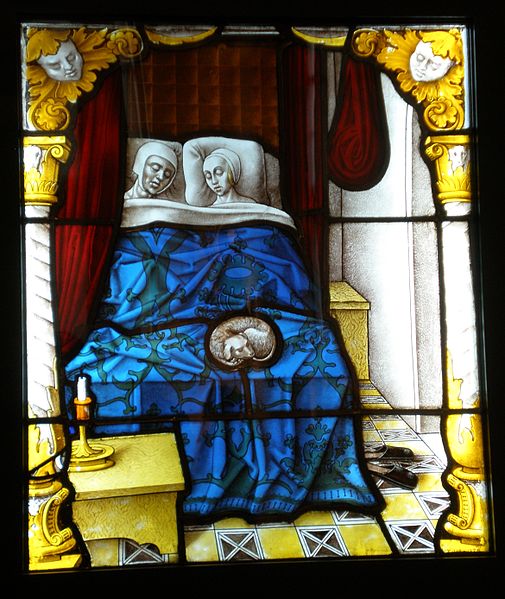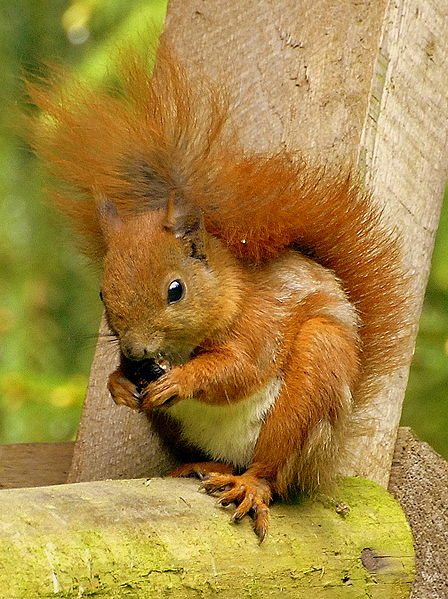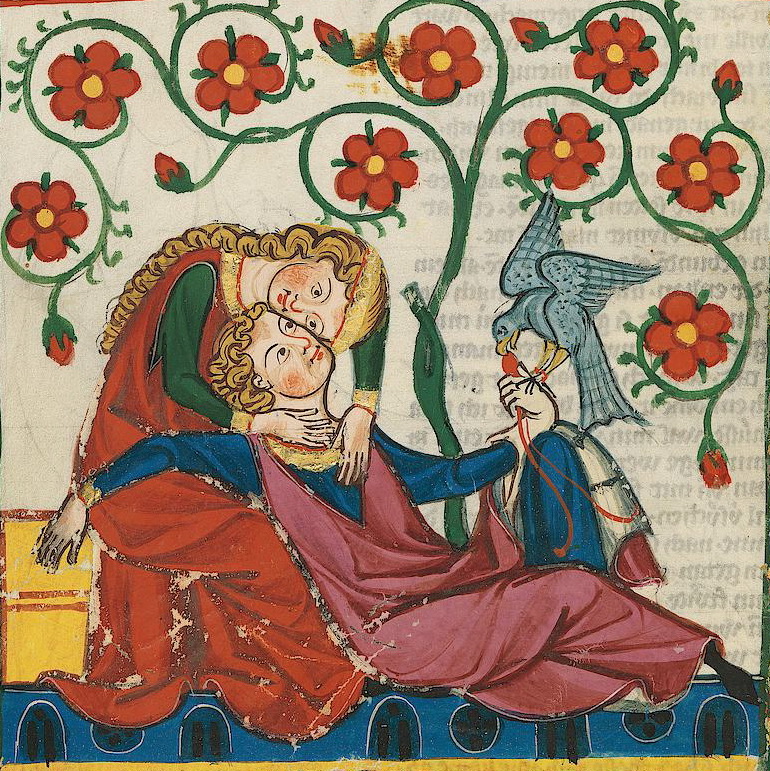 Today I welcome my friend, historical and contemporary romance author, Lindsay Townsend. Lindsay writes in a variety of eras, from ancient Crete and Egypt, to Roman and medieval Britain and up to the present.
Today I welcome my friend, historical and contemporary romance author, Lindsay Townsend. Lindsay writes in a variety of eras, from ancient Crete and Egypt, to Roman and medieval Britain and up to the present.Lindsay found me on the loops when we both had author days on the same day. That was when my first book came out, and I had no idea what I was doing. Lindsay has been very nice to newbie me, and I'm delighted to host her here.
And now for Lindsay's wonderful post.
In the Middle Ages women and men often doted on their pets. In York Minster, there is a portrait of the lap dog of Lady Margaret Roos, rendered in stained glass. The dog looks happy and sleek, with a belled collar. In the picture here of Tobias and Sara, a window of about 1520 from Cologne, the couple's pet dog is a sleepy symbol of wedded tranquillity.
In other drawings of medieval pets, the British Library has a manuscript showing a woman with a pet squirrel while the Luttrell Psalter shows a collared pet squirrel as a sign of status.
Birds were also popular. Jays and magpies - called 'pies' - were kept in cages and taught to copy speech. Larks and nightingales were kept for their sweet songs.
 Cats in the Middle Ages were kept mainly as mousers, and also, more grimly, for their fur and skins. Yet cats were also treasured. Exeter Cathedral lists in its accounts from 1305 to 1467 the sum of a penny a week to feed the cathedral cats if the animals did not catch many mice in the main church.
Cats in the Middle Ages were kept mainly as mousers, and also, more grimly, for their fur and skins. Yet cats were also treasured. Exeter Cathedral lists in its accounts from 1305 to 1467 the sum of a penny a week to feed the cathedral cats if the animals did not catch many mice in the main church.Dogs remained a favourite - so much so that nunneries tried and failed to ban the keeping of dogs as pets in various convents. Nuns were warned not to bring their pets into church and the pets included dogs, hunting dogs, rabbits, squirrels, birds and even monkeys.
Hunting dogs and hawks were not officially pets, being used to hunt and bring extra food for the table and to provide sport and entertainment to their lords and ladies. However, hawks were also massive status symbols, given as kingly gifts and well-known as signs of wealth and power. As such they were pampered and displayed - so much so that perches were even brought indoors to their owners could have their falcons with them. In 1368 the Abbot of Westminster, Nicholas de Litlington, bought a wax image of a falcon to offer at the altar to help a sick falcon recover. Lay men and women often brought their pets into church - the men with hawks on their wrists and women with lap-dogs.
 Breeds of pets changed over time and some are unknown to us now. Medieval man in particular had a passion for hunting and bred horses and dogs for that activity. There were horses bred for stamina and long chases through woodland after quarry, sturdy beasts called coursers (chasers) And as a hunting dog, the big, deep-chested, long-legged alaunt was much prized.
Breeds of pets changed over time and some are unknown to us now. Medieval man in particular had a passion for hunting and bred horses and dogs for that activity. There were horses bred for stamina and long chases through woodland after quarry, sturdy beasts called coursers (chasers) And as a hunting dog, the big, deep-chested, long-legged alaunt was much prized.The alaunt makes an appearance in my third knight book, A Knight's Enchantment, out on June 1. You can read an excerpt here.
Thank you, Historical Hussies, for having me as a guest!
Best wishes, Lindsay
www.lindsaytownsend.net






16 comments:
Thanks for the post! Not many people know that medieval people had animals as pets and weren't by default cruel and uncaring towards animals.
Hi Lindsay, and thanks for coming over. Great post. I'd never heard of an alaunt before. Does that breed of dog still exist?
Hi Linda - thanks so much for having me here today! You know I'm a big fan of you and your super work.
I agree Alm - medieval people had a surprising variety of well-cared for pets.
Hi Linda - alaunts are a mastiff type dog. Because of developments in breeding I don't think they are about in that form any more.
Interesting post. Taking them to church is surprising. I'm still thinking about the penny a week to feed all the cathedral cats!!! I currently have 6 cats and feed ferals and I don't even want to know how much I spend lol.
Everyone loves animals, even our ancestors! Ain't that great. I myself am an avid animal lover.
Hi catslady - I think a penny a week in that time would have been a great deal.
Hi Mary. I agree. We have always loved pets. We probably had pets in the stone age and the caves.
Aw, thanks, Lindsay. You always make me feel so good.
Great post Lindsay. Pets mean so much to us these days. They're part of the family. Nice to know that even in times like the medieval era our animals were our friends
Hanna
Great post. It doesn't surprise me that people have spoiled dogs for centuries. I have two spoiled dogs.
When I was doing some research for a book set in early medieval Scotland, I discovered that geese were also kept as pets. Apparently,they made great watchdogs. And I can confirm this, having been attacked by geese many times at a neighborhood duck pond.
kelleyheckart.com
Interesting post, Lindsay. I didn't realize Jays could be taught to mimic speech!
Lindsay, thanks for your wonderful post. This is a topic after my own heart. I didn't realize pets were so prized during the medieval period.
Though, if you consider human nature and the relationship we have to our own pets, and to animals, it's good to realize it's been throughout history.
I am trying to find out if people actually brought there dogs into churches with them- and if so when that stopped. A friend of mine said that never was allowed but i recall reading it did in fact go on.
Can you help to answer this question>
Maggie
A lovely post. What a touching stained glass image from York Minster! Thanks, Linda and Leslie.
So, that the pet is not just for one person, but the children can pretend that it is their own. my lost pet alert
Your table are too sword like to feature and relaxed to see. Amazing Pet Expos
It's such nice content! Thanks for sharing content and such nice information for me. I hope you will share some more content about Your Gateway to Creativity
. Please keep sharing!
Post a Comment